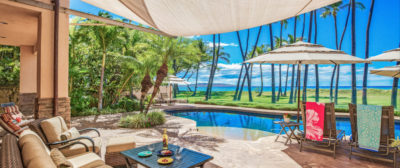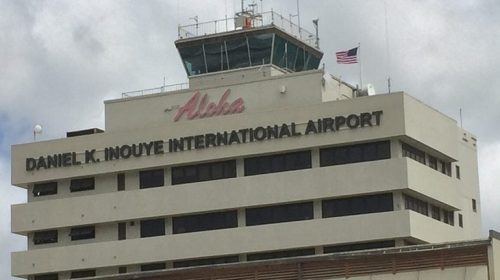Hawaii Vacation Rentals Up But Not Better Than Pre-pandemic
Hawaii vacation rentals statewide reported substantial increases in supply, demand, occupancy and average daily rate (ADR) in August 2021 compared to August 2020. However, in comparison to August 2019, vacation rental supply, demand and ADR were down while occupancy rose slightly due to a reduction in supply levels.
The Hawaii Tourism Authority (HTA) issued today the Hawaii Vacation Rental Performance Report for the month of August utilizing data compiled by Transparent Intelligence, Inc.
In August 2021, the total monthly supply of statewide vacation rentals was 616,900 unit nights (+73.0% vs. 2020, -32.7% vs. 2019) and monthly demand was 459,200 unit nights (+847.7% vs. 2020, -32.6% vs. 2019). That resulted in an average monthly unit occupancy of 74.4 percent (+60.8 percentage points vs. 2020, +0.1 percentage points vs. 2019) (Figures 1 and 2) for August, which was higher than the occupancy of Hawaii’s hotels (73.4%).
The ADR for vacation rental units statewide in August was $254 (+32.6% vs. 2020, +24.2% vs. 2019). By comparison the ADR for hotels was $355 in August 2021. It is important to note that unlike hotels, units in vacation rentals are not necessarily available year-round or each day of the month and often accommodate a larger number of guests than traditional hotel rooms.
In August, legal short-term rentals were allowed to operate in Maui County and on Oahu, Hawaii Island and Kauai as long as they were not being used as a quarantine location.
In August 2021, passengers arriving from out-of-state could bypass the State’s mandatory 10-day self-quarantine if they were fully vaccinated in the United States or with a valid negative COVID-19 NAAT test result from a Trusted Testing Partner prior to their departure through the Safe Travels program. On August 23, 2021, Hawaii Governor David Ige urged travelers to curtail non-essential travel until the end of October 2021 due to the Delta variant resulting in the state’s health care system being overburdened.
The data in HTA’s Hawaii Vacation Rental Performance Report specifically excludes units reported in its Hawaii Hotel Performance Report and its Hawaii Timeshare Quarterly Survey Report. A vacation rental is defined as the use of a rental house, condominium unit, private room in private home, or shared room/space in private home. This report does not determine or differentiate between units that are permitted or unpermitted. The legality of any given vacation rental unit is determined on a county basis.
Island Highlights
In August, Maui County had the largest vacation rental supply of all four counties with 231,000 available unit nights (+87.6% vs. 2020, -24.3% vs. 2019). Unit demand was 174,600 unit nights (+1,344.3% vs. 2020, -26.1% vs. 2019), resulting in 75.6 percent occupancy (+65.8 percentage points vs. 2020, -1.8 percentage points vs. 2019) with ADR of $282 (+23.1% vs. 2020, +20.9% vs. 2019). In comparison, Maui County hotels reported ADR at $596 and occupancy of 73.6 percent.
Oahu vacation rental supply was 158,700 available unit nights (+57.7% vs. 2020, -42.3% vs. 2019) in August. Unit demand was 113,500 unit nights (+435.6% vs. 2020, -48.0% vs. 2019), resulting in 71.5 percent occupancy (+50.4 percentage points vs. 2020, -7.9 percentage points vs. 2019) and ADR of $205 (+25.9% vs. 2020, +17.0% vs. 2019). Oahu hotels reported ADR at $245 and occupancy of 73.0 percent.
The island of Hawaii vacation rental supply was 136,300 available unit nights (+74.9% vs. 2020, -33.4% vs. 2019) in August. Unit demand was 103,900 unit nights (+949.9% vs. 2020, -21.2% vs. 2019), resulting in 76.2 percent occupancy (+63.5 percentage points vs. 2020, +11.8 percentage points vs. 2019) with ADR of $211 (+27.8% vs. 2020, +32.7% vs. 2019). Hawaii Island hotels reported ADR at $385 and occupancy of 73.2 percent.
Kauai had the fewest number of available unit nights in August at 90,900 (+65.7% vs. 2020, -31.3% vs. 2019). Unit demand was 67,200 unit nights (+1,173.3% vs. 2020, -29.3% vs. 2019), resulting in 73.9 percent occupancy (+64.3 percentage points vs. 2020, +2.1 percentage points vs. 2019) with ADR of $328 (+22.5% vs. 2020, +25.4% vs. 2019).
Kauai hotels reported ADR at $357 and occupancy of 76.7 percent.
Tables of vacation rental performance statistics, including data presented in the report are available for viewing online here.




